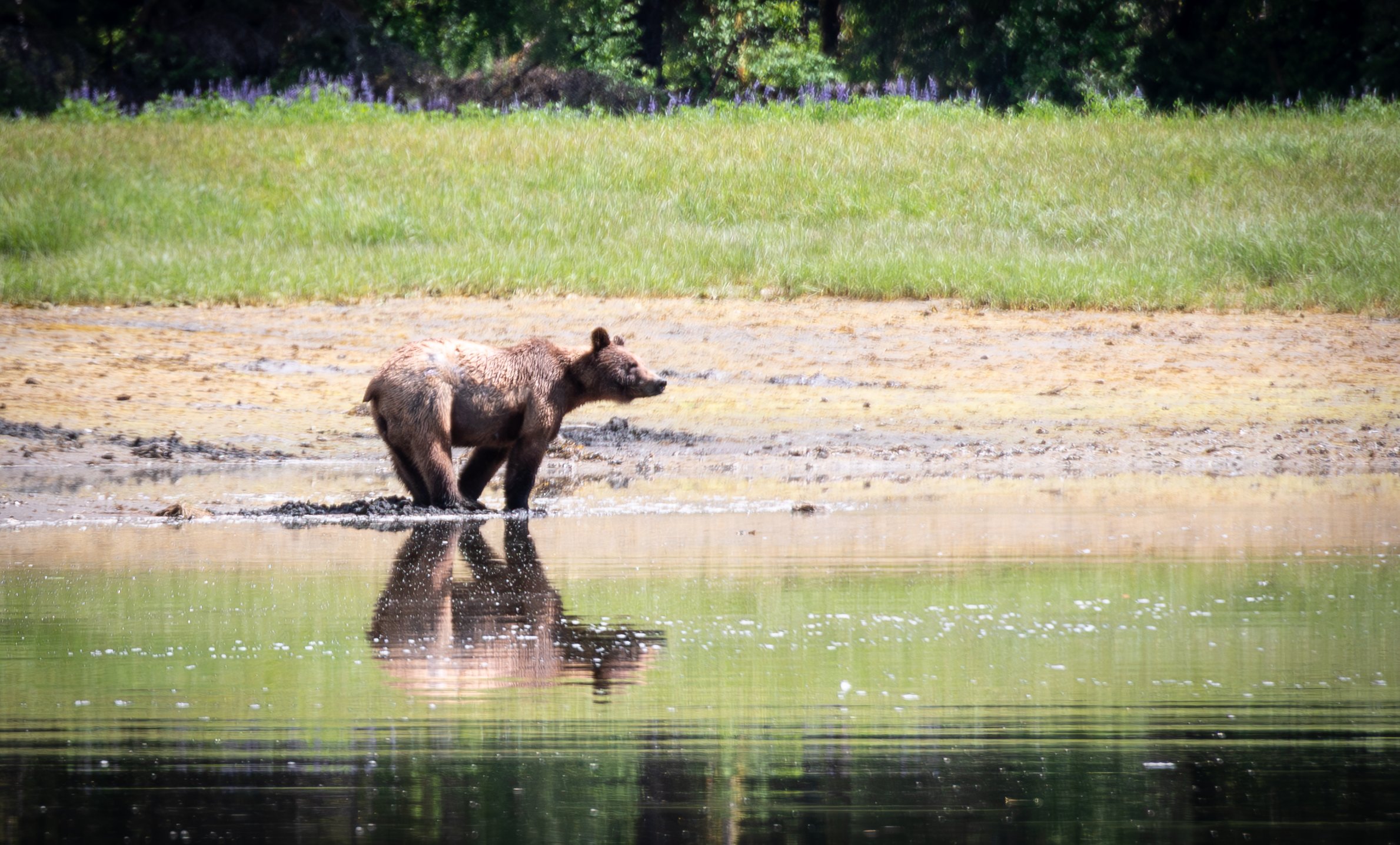Culpepper Lagoon Lay Day 2
/Today is our big day of explorations – the weather gods have brought us sun and less wind that yesterday.
beautiful morning to go exploring
grizzley and bald eagle share this breakfast spot
We took a long, 10.1-mile roundtrip dinghy explore the entrance to Culpepper Lagoon. We wanted to confirm the timing we have for low slack water. The head of Kynoch Inlet was calling, and we could not pass up the sunny skies and calm winds.
We went out the entrance at a plus 1.63 rising tide at Tom Bay. The water was flowing at less than one knot. When leaving the entrance, do not make your turn to the left too soon. Continue straight or even favor the right side toward the mud flats. It’s a bit counterintuitive, but the water is deep on that side. Just check your charts and you’ll see how the bottom contours.
There are extensive mudflats at the head of Kynoch Inlet, which usually means great bear viewing at this time of year. In fact, we saw two brown bears this time. The larger bear stayed on the far side of the creek, but the “younger” bear put on a show.
We sat in the dinghy for a long time in the backwater just inside the flow from the rapids in about 15 feet, watching as the bear made his way meticulously along the water’s edge. We watched him dig in the mud for edibles, leaving behind a trail of upturned mud. He was determined to find all that he could for his breakfast buffet. It’s funny to see how dedicated they are to finding tasty morsels.
you gotta get your paws dirty if you want to eat
i’m checking you out checking me out
At one point he started digging with one paw and we saw he had found a very large Geoduck- we swear he shivered with excitement and then began to dig feverishly with both paws. It was indeed the biggest Geoduck I have ever seen, and he devoured it with relish.
digging deep for the big reward
sitting down to enjoy a large Geoduck
an after breakfast refreshing drink of freah water from the stream sitting on top of the salt water
We explored up Kynoch Inlet to the first turn to the right, and were amazed yet again at the shear, steep granite cliffs that surround the head of the Inlet.
We headed back into the lagoon on a plus 4.08 foot tide at Tom Bay. We recorded a 19-foot depth in the narrows, and the current was flowing inbound at a couple of knots. There were swirls but they were laminar and there were 10 -15 feet diameter, flat whirlpools on the inside. They were of no significance for the dinghy at these flow rates.
I took the drone up to look at the river with a 8.33-foot tide at Tom’s Bay, that’s about a half tide
darker water indicates the deepest water
planning route around fallen trees
bird’s eye view of the river as it continues back into the valley
After lunch, we launched the dinghy for an explore up the river 1 hour before high tide, so we would have high but still rising water to maximize our trip upriver. Having the reconnaissance photos of the river at low tide was a great aid in planning our strategy to stay in the deepest channels. The photos also helped in planning how to get past the various fallen trees in the river.
high tide at culpepper lagoon
Over the years, I have become more comfortable navigating up rivers in shallow water. Today, the water was crystal clear and with the sun at our backs, we were able to see all the obstructions and pass safely past rocks, submerged detritus and fallen trees.
clear water makes the bottom seem very close, its about 4 feet
We were able to get up the river about 1 mile, where it turns to a permanent, shallow rapids. Interestingly, this is the same turnaound point we had several years ago when kayaking. The lowest water we saw on this trip was a brief 3.5 feet and generally never less than four feet until we hit those shallow rapids. As a point of reference, It was a 13.88-foot high tide at Tom Bay.
end of the line
karen grabs a fallen tree as we take a rest in our river explore
exploring rivers is always full of beautiful views
looking back at oceanflyer from the river
































